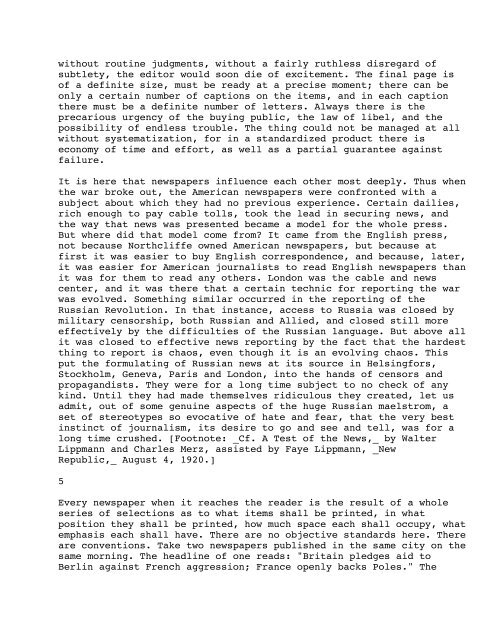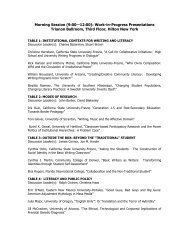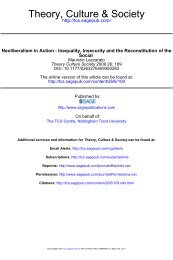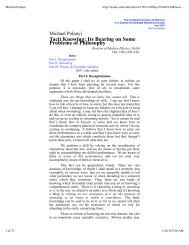PUBLIC OPINION by WALTER LIPPMANN TO FAYE LIPPMANN ...
PUBLIC OPINION by WALTER LIPPMANN TO FAYE LIPPMANN ...
PUBLIC OPINION by WALTER LIPPMANN TO FAYE LIPPMANN ...
You also want an ePaper? Increase the reach of your titles
YUMPU automatically turns print PDFs into web optimized ePapers that Google loves.
without routine judgments, without a fairly ruthless disregard of<br />
subtlety, the editor would soon die of excitement. The final page is<br />
of a definite size, must be ready at a precise moment; there can be<br />
only a certain number of captions on the items, and in each caption<br />
there must be a definite number of letters. Always there is the<br />
precarious urgency of the buying public, the law of libel, and the<br />
possibility of endless trouble. The thing could not be managed at all<br />
without systematization, for in a standardized product there is<br />
economy of time and effort, as well as a partial guarantee against<br />
failure.<br />
It is here that newspapers influence each other most deeply. Thus when<br />
the war broke out, the American newspapers were confronted with a<br />
subject about which they had no previous experience. Certain dailies,<br />
rich enough to pay cable tolls, took the lead in securing news, and<br />
the way that news was presented became a model for the whole press.<br />
But where did that model come from? It came from the English press,<br />
not because Northcliffe owned American newspapers, but because at<br />
first it was easier to buy English correspondence, and because, later,<br />
it was easier for American journalists to read English newspapers than<br />
it was for them to read any others. London was the cable and news<br />
center, and it was there that a certain technic for reporting the war<br />
was evolved. Something similar occurred in the reporting of the<br />
Russian Revolution. In that instance, access to Russia was closed <strong>by</strong><br />
military censorship, both Russian and Allied, and closed still more<br />
effectively <strong>by</strong> the difficulties of the Russian language. But above all<br />
it was closed to effective news reporting <strong>by</strong> the fact that the hardest<br />
thing to report is chaos, even though it is an evolving chaos. This<br />
put the formulating of Russian news at its source in Helsingfors,<br />
Stockholm, Geneva, Paris and London, into the hands of censors and<br />
propagandists. They were for a long time subject to no check of any<br />
kind. Until they had made themselves ridiculous they created, let us<br />
admit, out of some genuine aspects of the huge Russian maelstrom, a<br />
set of stereotypes so evocative of hate and fear, that the very best<br />
instinct of journalism, its desire to go and see and tell, was for a<br />
long time crushed. [Footnote: _Cf. A Test of the News,_ <strong>by</strong> Walter<br />
Lippmann and Charles Merz, assisted <strong>by</strong> Faye Lippmann, _New<br />
Republic,_ August 4, 1920.]<br />
5<br />
Every newspaper when it reaches the reader is the result of a whole<br />
series of selections as to what items shall be printed, in what<br />
position they shall be printed, how much space each shall occupy, what<br />
emphasis each shall have. There are no objective standards here. There<br />
are conventions. Take two newspapers published in the same city on the<br />
same morning. The headline of one reads: "Britain pledges aid to<br />
Berlin against French aggression; France openly backs Poles." The





